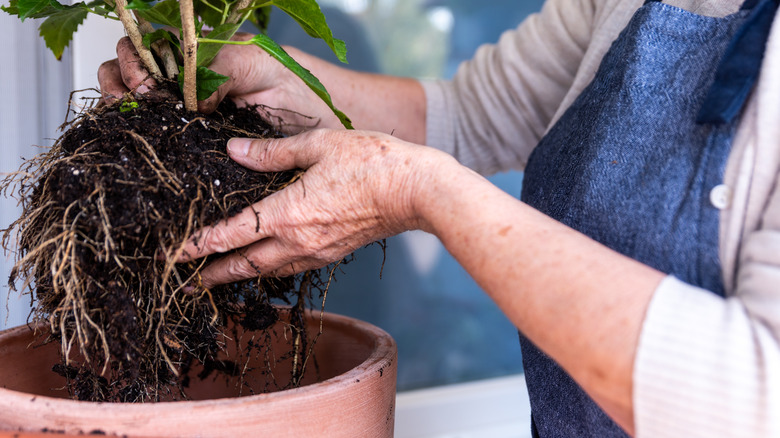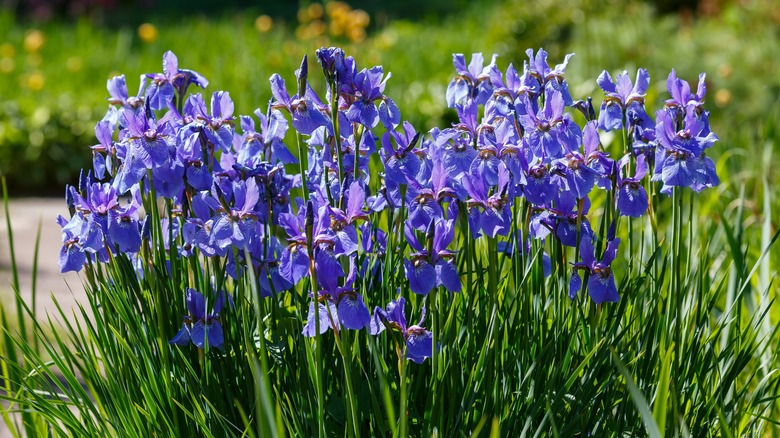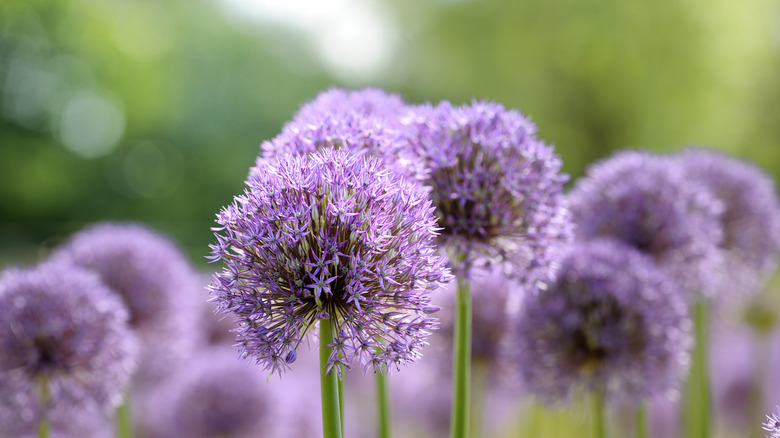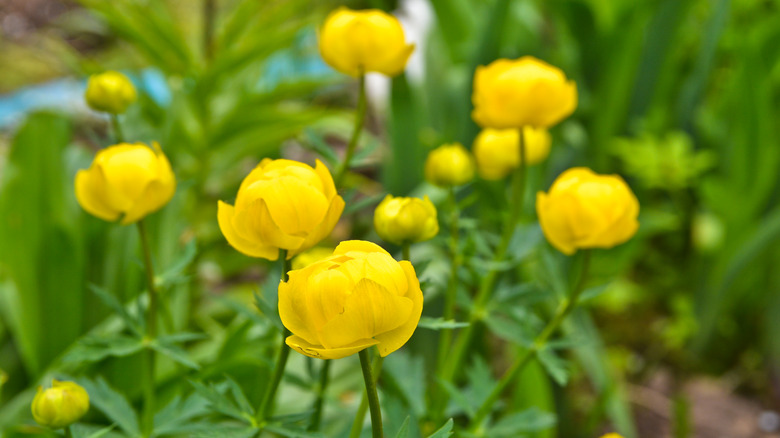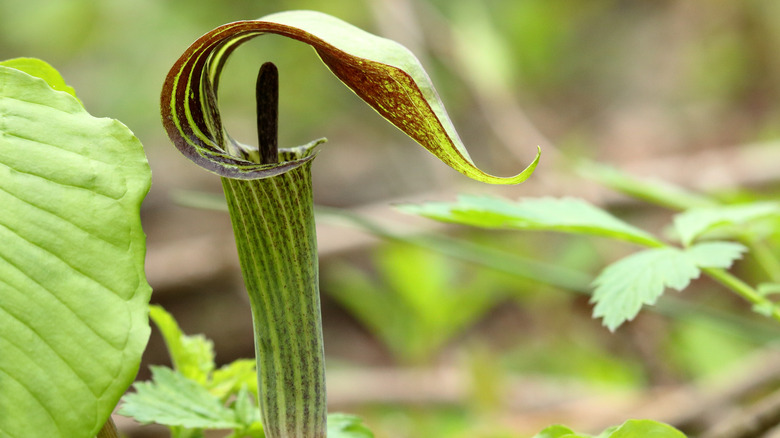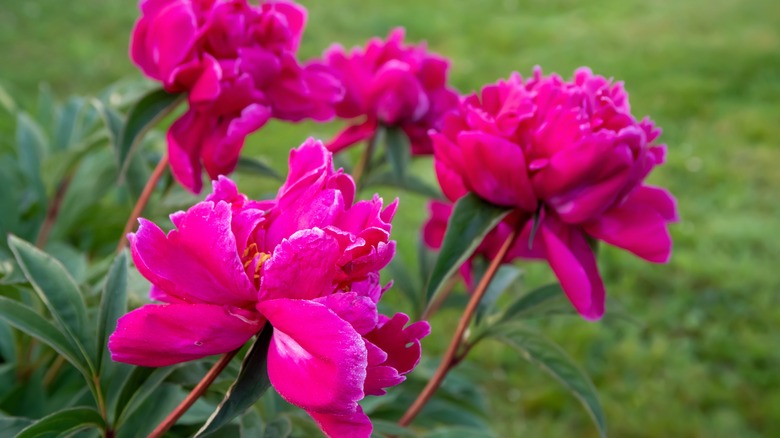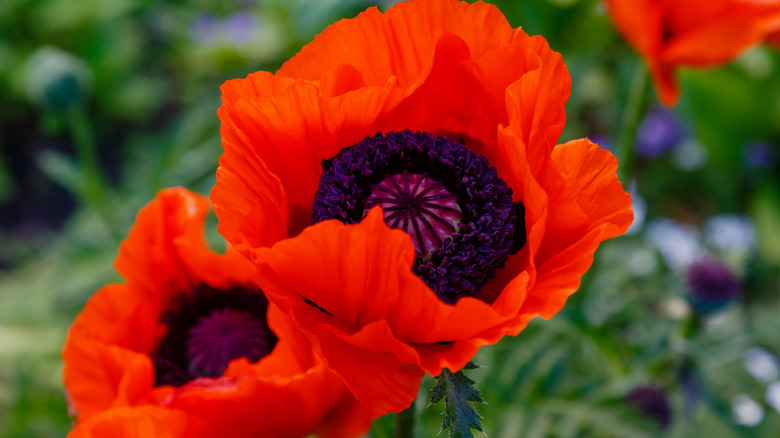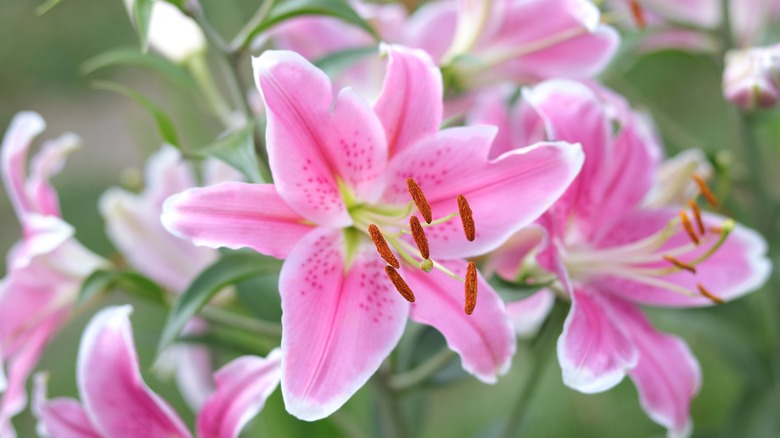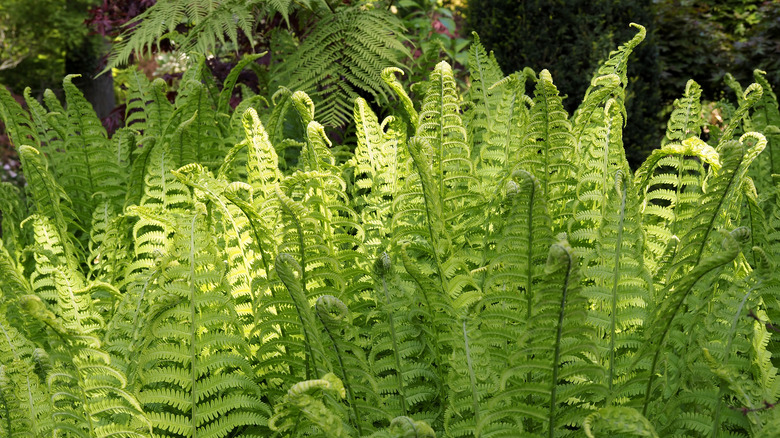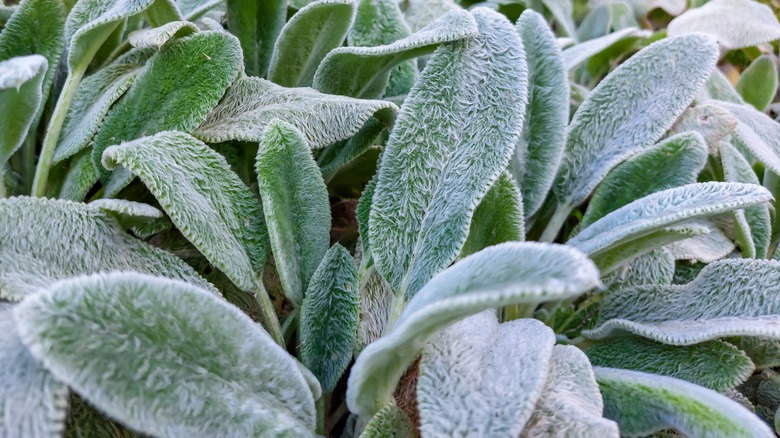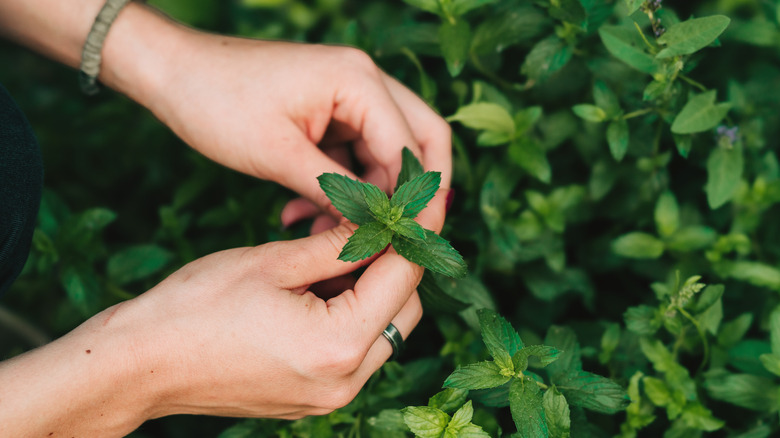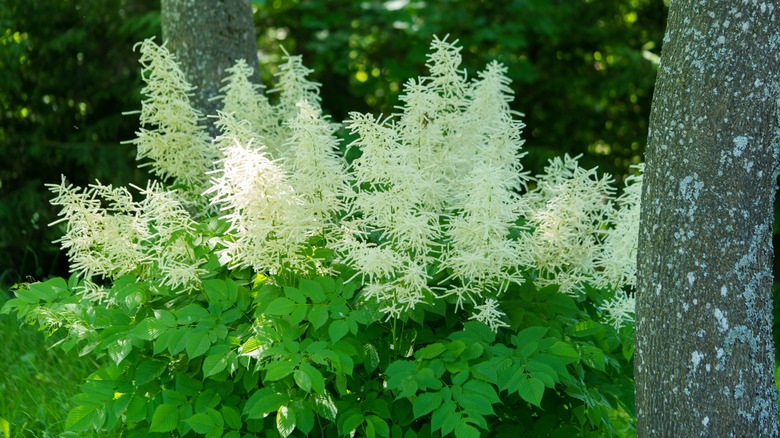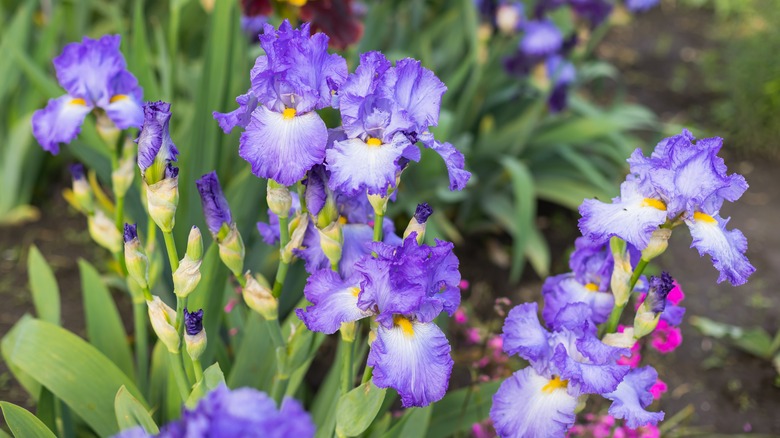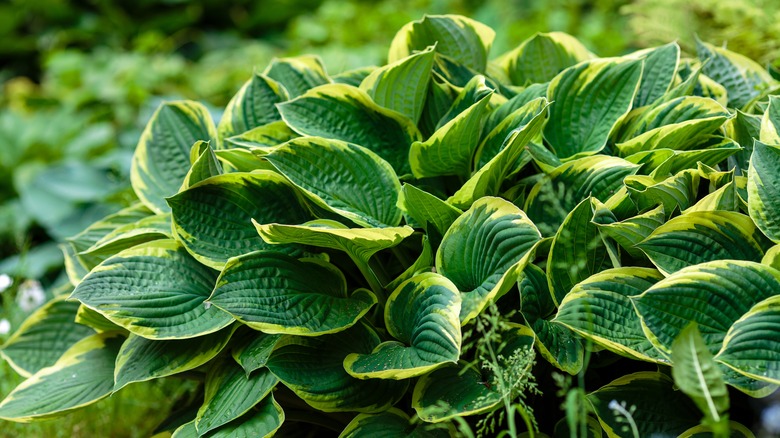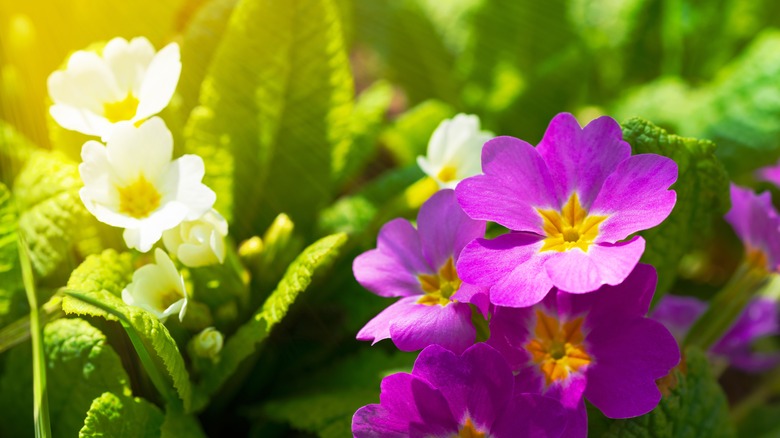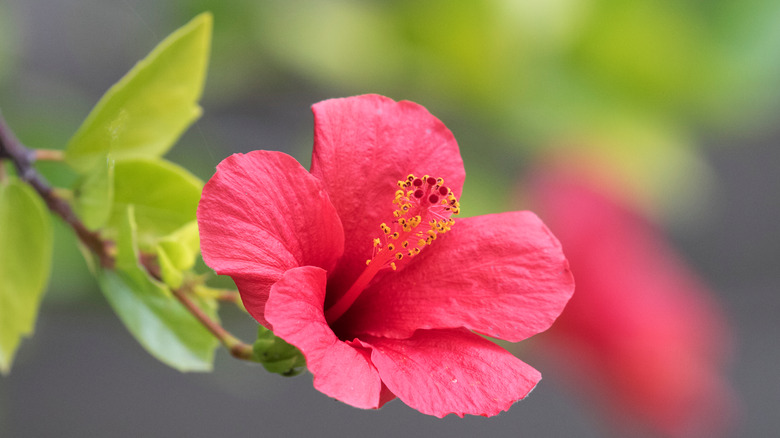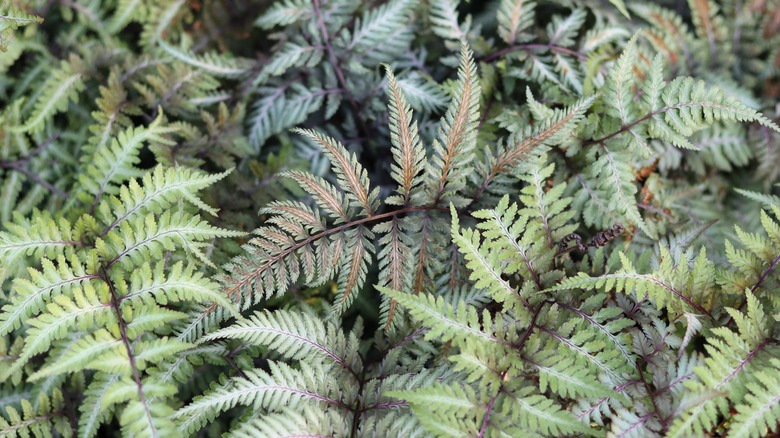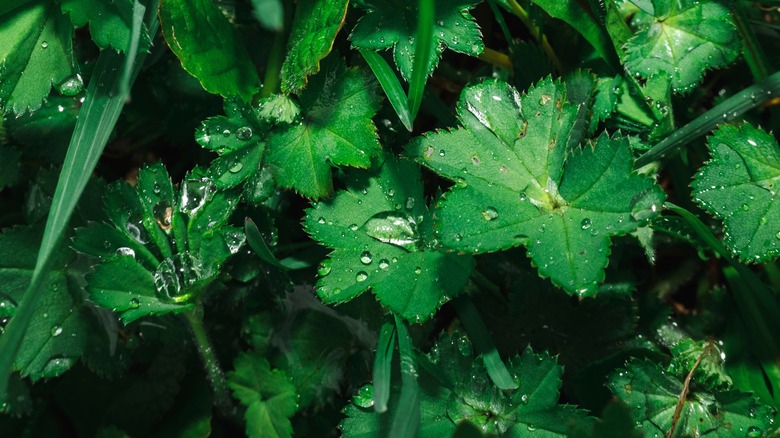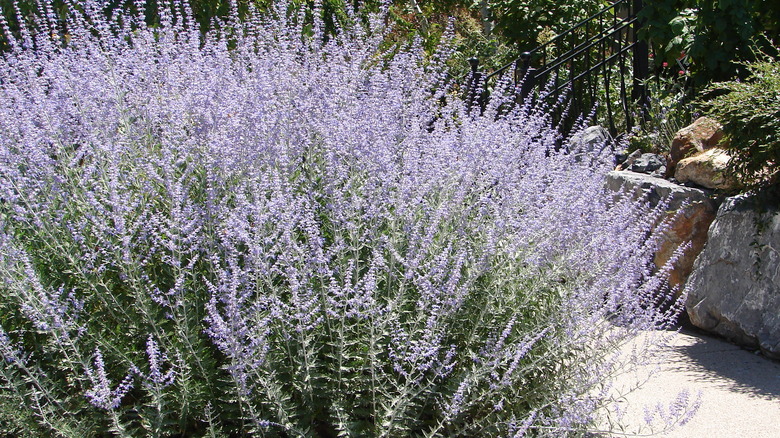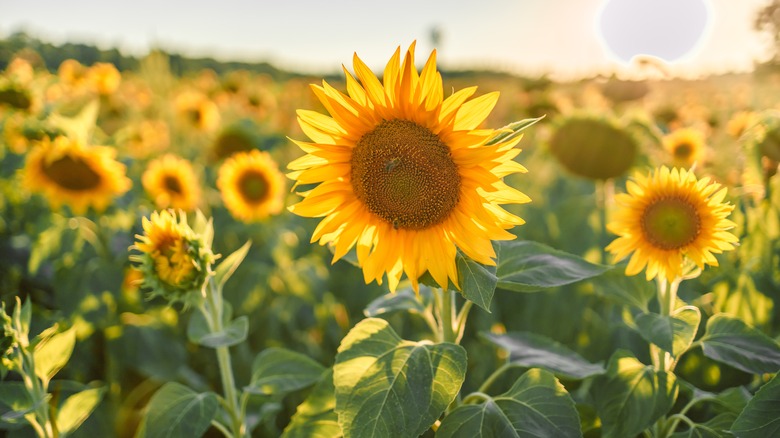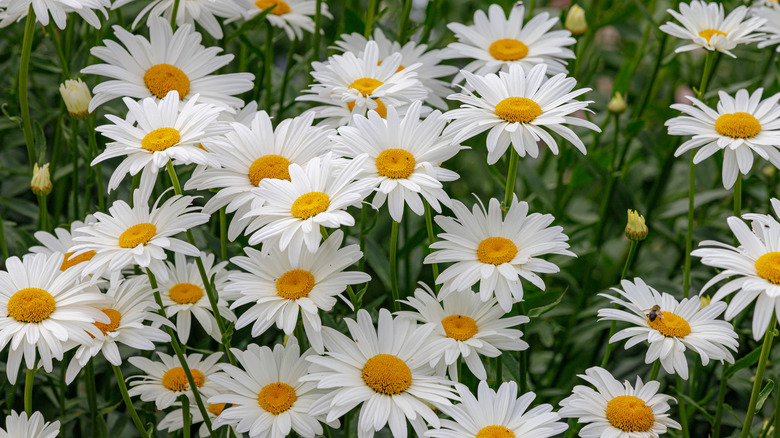20 Perennials You Should Be Dividing In The Fall
If you're looking to curate a garden that will re-sprout year after year without having to constantly purchase new greenery, it's a good idea to invest in perennial plants. Sometimes, however, those first few plants you purchased aren't filling in the space, or you're left with a barren spot from a plant that didn't make it through the year. Sure, you can head to the garden center to buy some more, but there's another option that doesn't require any additional money: dividing your spring and summer perennials in the fall.
Instead of keeping the root ball together, dividing your plants requires you to separate them into two or more sections. These smaller sections — and therefore smaller plants — can easily be moved, can fill in gaps in your landscaping design, and may benefit your garden by making it easier for every plant to receive enough nutrients from the soil. This is also a good course of action if you're noticing that you have a bit too much of a green thumb and your plants are ballooning into something more unkempt than full and lush. Each year around fall, once your spring or summer perennial stops flowering and enough time before the ground freezes, take a look at the situation to determine if the plant would be better off split. By the time it flowers the next year, you'll have two or more established and more manageable plants on your hands, all without having to sacrifice any additional growth or money.
1. Siberian iris (Iris sibirica)
Siberian irises are well-known for their unique shape and vibrant hue, and they can create the perfect centerpiece or pop of color in an otherwise very green garden. They do well when left in the same location as they have deep roots, but they can benefit from being divided at least every 10 years to ensure that there are enough nutrients in the soil to go around. For the best results, divide the plant in spring or early fall. When dividing in the fall, after cutting back the leaves to 6 to 12 inches tall, split the rhizome using a sharp knife or axe and replant.
2. Ornamental onion (Allium)
Ornamental onions might share a name with a common cooking ingredient, but they're much more decorative than their flavorful, edible cousins. When properly spaced, these plants produce large, round heads full of stunning star-shaped flowers, but in order to reach their full potential, they need a bit of TLC during the off-season. If you notice that your alliums are looking a bit crowded, split them up in the fall after they begin to go dormant and replant the bulbs throughout your garden. Once the plants bloom again, they should have much more room to breathe and absorb nutrients from the soil.
3. Globeflower (Trollius europaeus)
The globeflower, also commonly referred to as trollius, is a fairly low-maintenance perennial flower in the ranunculaceae family that boasts a distinct, vibrant bloom during its active season. It is resistant to most pests, even deer and rabbits, and is fairly easy to divide once you're ready to split up a larger plant thanks to its tendency to form compact clumps of roots. For the best results, divide in the fall each year. It might take your flowers a bit of time to recover after being jostled around and uprooted, but division will help ensure a successful bloom during the warmer months of the year.
4. Jack-in-the-pulpit (Arisaema triphyllum)
Jack-in-the-pulpits have one of the most unique names and looks you can find in a perennial flower, but that doesn't mean that they require extra-special care or maintenance if you're planning to cultivate them in your own garden. These flowers might look like something out of the rainforest, but they're actually native to Eastern North America and will, therefore, thrive in those areas without much help. If you want to split up your flowers, divide them in fall once they go dormant. Replant the original clump of roots back into its hole immediately, then plant the removed bulbs elsewhere soon after.
5. Peony (Paeonia)
Peonies are a popular flower to include in bouquets, but they can last significantly longer in your garden than in a vase. The same peony plant can thrive in the garden without much maintenance for five decades and with a bit more TLC for up to 100, but you can choose to divide them every 10 years or so to relocate or thin out the current blooms. To do so properly, cut down the stems in fall, dig up the roots, and divide them into sections of three to five buds. Replant them around your garden or, if you have too many, consider gifting them to friends.
6. Oriental poppy (Papaver orientale)
Oriental poppies are one of the most recognizable flowers, but their striking appearance does come with a few maintenance challenges. It can be tempting to divide your plant each year to spread it amongst your garden and create as many blooms as possible, but oriental poppies should only be divided when necessary, as the plant is quite sensitive to the stress of being dug up. If you need to divide them because your flowers are starting to look a bit lackluster, wait until the early days of fall and ensure every part of the plant ends up in a location where it will get enough light.
7. Lily (Lilium)
There are plenty of varieties of lilies that can be grown at home, but most will benefit from an occasional division to prevent bulbs in the middle of the clump from producing less-than-stellar blooms. If you notice this happening to your lily, wait until fall and dig up the clump of roots. Separate the bulbs, then replant the largest ones in the original hole and spread out the smaller bulbs across the garden. It's best to plant these separated bulbs immediately after digging them up, but it's also possible to store them in the refrigerator if you need to delay planting for whatever reason.
8. Lady fern (Athyrium)
If you're looking to fill empty space in your garden with something that's lush and green but still texturally interesting, look no further than a classic fern. Lady ferns create thick swaths of greenery but don't require much maintenance, making them a great option if you're more of a set-it-and-forget-it style gardener. If you want to spread them around your garden, dividing is easy, too. Just split up the rhizomes during the plant's inactive seasons, or spring and fall. However, make sure you choose a time where weather won't get too extreme, as a powerful frost or surge in summer temperatures can easily kill newly-divided plants.
9. Lamb's ear (Stachys byzantina)
Lamb's ear leaves boast a unique, fuzzy texture, but this distinctive appearance doesn't mean that you'll have to put in a large amount of work to cultivate them in your garden. These perennials require very little maintenance, and that includes when dividing and propagating. If you're planning to split up your plant, you can do so about every five years in the spring or fall. Simply dig it up and divide the root ball into a few parts by hand or with a spade, then replant your lamb's ear where you need a bit of softness around your property.
10. Mint (Mentha)
Many people are intimidated by the idea of growing edible plants, but the process is much simpler than most realize. If you're looking for an easy place to start, mint is one of the best herbs to grow in your backyard garden. With a small amount of maintenance, you'll be able to cultivate this perennial herb for use in refreshing cocktails, summery dishes, and even soothing teas. Division in spring or fall every three to five years is recommended if you want to propagate your existing plant, but it's also a good idea to routinely split up plants grown in containers to prevent overcrowding as they grow larger.
11. Goat's beard (Aruncus dioicus)
Goat's beard is a fairly low-maintenance plant that doesn't require much more than the occasional watering throughout the year. However, if you're planning to divide it, it can present a bit more of a challenge than you'd expect from its otherwise easy-going nature. Goat's beard has deep, woody roots, so removing and splitting them up to replant is much more difficult than something that's naturally softer or that sits closer to the surface. Because of this, it's best to divide goat's beard with a sharp knife in the spring or fall only when absolutely necessary — every 10 or more years, if possible.
12. Bearded iris (Iris × germanica)
The bearded iris is a member of the iris family and is well-known for its vibrant flowers with distinctive ruffled edges. This beautiful appearance while blooming makes it a popular perennial flower choice in gardens. Similarly to its cousin the Siberian iris, bearded irises benefit from occasional dividing to ensure that every bloom in an area gets enough nutrients to thrive. Divide your bearded iris after it flowers but with a solid amount of time before the first frost. In cooler climates, this might mean late summer, but it could also be as late as early fall in warmer areas.
13. Hosta (Hosta plantaginea)
Hostas are fairly-resilient plants that don't need much extra care beyond the basics throughout the year. This means that they don't need to be divided. Therefore, unless you'd like to propagate additional plants around the garden, they can be left alone without any issues for several years. However, if you do want to divide your plants, the best windows of opportunity include every 10 years after they sprout in the spring or when the weather is cool and wet in the fall. When dividing in the fall, September is typically best in chillier northern states, while October is ideal as you move down south.
14. Primrose (Primula vulgaris)
Primrose is a popular garden perennial that's available in just about every color in the rainbow. If you want to spread more color around your garden and ensure you have a stunning spring setup, consider dividing your existing plants. Primroses are fairly easy to divide and hold up well if you're gentle with the roots, so you can get creative with your placements year after year. Divide them early enough in the fall so that they have time to gain their footing before the first major frost rolls in. They can also be divided after they bloom in the spring.
15. Rose mallow (Hibiscus moscheutos)
Rose mallow, also commonly referred to as perennial hibiscus, is the perfect flower to add a bit of tropical flair to your backyard greenery. In most situations, it's best to leave this plant alone as it doesn't take very well to division and transplantation, but it can be done if you're willing to approach the task with caution. Rose mallow plants can be divided in the spring or fall, but fall might be the best choice, as the plant doesn't sprout very quickly if divided in the spring. You might not get blooms for a few years, but you'll be left with a more manageable plant.
16. Japanese painted fern (Athyrium niponicum)
Care for the Japanese painted fern is similar to care for other ferns, including the lady fern. This plant is generally easy to maintain throughout the year and does well with division, though it's best to do this during the seasons when it's not actively growing. For the Japanese painted fern, dividing in the spring or fall will guarantee the best results. To divide the plant, uproot it, then separate the roots with a sharp knife where necessary. Once you're done, replant, and you should be able to enjoy multiple healthy plants once the growing season starts back up again.
17. Lady's mantle (Alchemilla mollis)
Lady's mantle is well-known for its uniquely-shaped leaves and even more unique name, but it's a popular choice likely thanks to its hardiness and resilience. This plant can grow in a wide variety of climates, typically doesn't need fertilizer, and doesn't attract any common pests. It's also easy to divide if you're attempting to propagate your existing plant, but this should only be done when necessary. Simply dig it up during spring or early fall, then separate the roots with a knife or spade into more manageable sections and replant. It might look a bit droopy at first, but it will perk up soon enough.
18. Russian sage (Perovskia atriplicifolia)
Russian sage might share a name with the common fuzzy herb, but this perennial is much taller and more colorful than what you'd find in your spice cabinet. This shrub is great both for decoration and as a natural way to attract pollinators to your garden, so it's not uncommon to want to divide this plant to add it to spaces that need a bit more texture and color. Unfortunately, however, this should only be done rarely, as Russian sage doesn't handle this stress well. It can be occasionally divided in the spring or fall once the buds are dry.
19. Sunflower (Helianthus)
Sunflowers are beautiful and show-stopping plants, but when left to their own devices, they can quickly spread and take over your garden thanks to their rapidly-growing rate. If you're looking for a way to control this spread and determine if they're the reason your other plants are suffering, division can help. Dig up your plants to divide them in the spring or fall. To keep them in the areas where you want them, ensure that the flowers you're prioritizing get enough nutrients and guarantee that you'll be able to enjoy healthy, full blooms once the flowers begin to open up for the season.
20. Shasta daisy (Leucanthemum × superbum)
Shasta daisies are one of the most classic flower varieties out there. If you want to ensure that your plant will thrive and produce as many healthy blooms as possible, you might want to consider dividing it every few years. Splitting up your plant can give it the space it needs to breathe and absorb nutrients, leaving you with a lush display of petals above the ground. To do this in your own garden, divide up your daisies either after the last frost in spring or before the first frost in the fall so that new plants have time to establish themselves.
